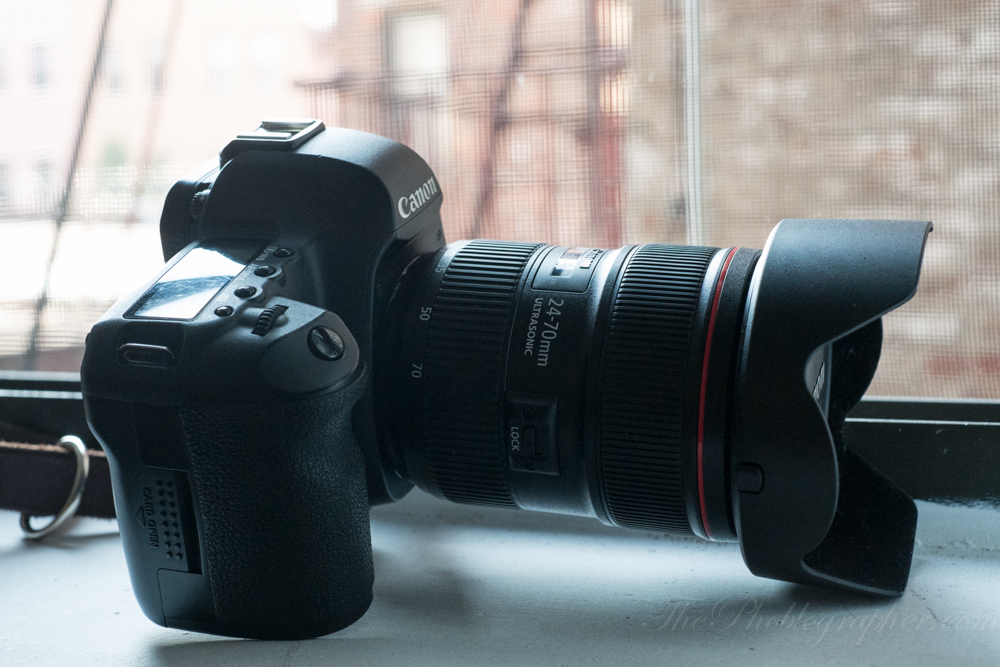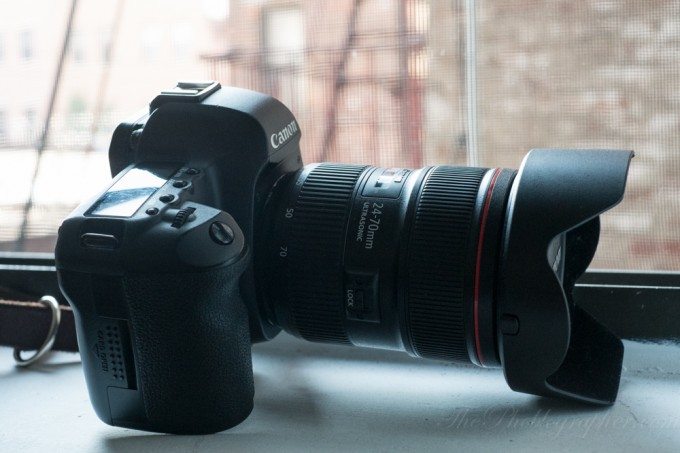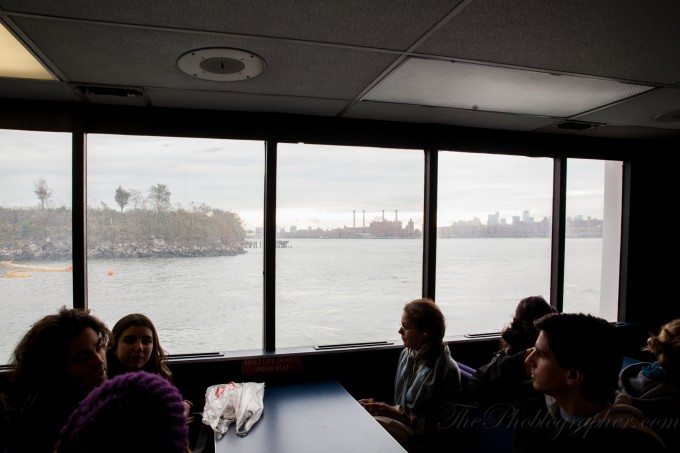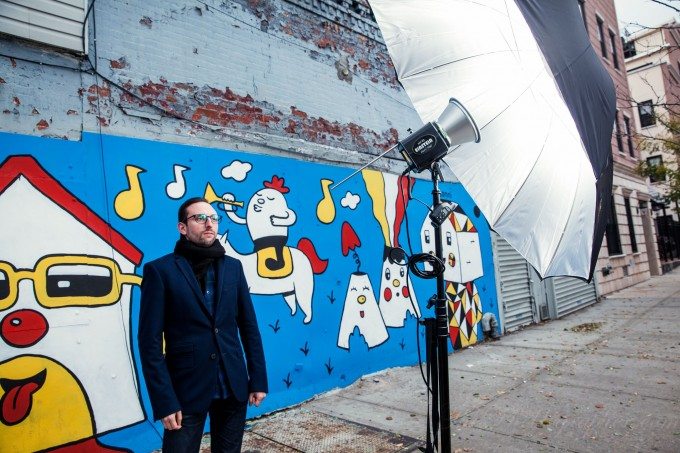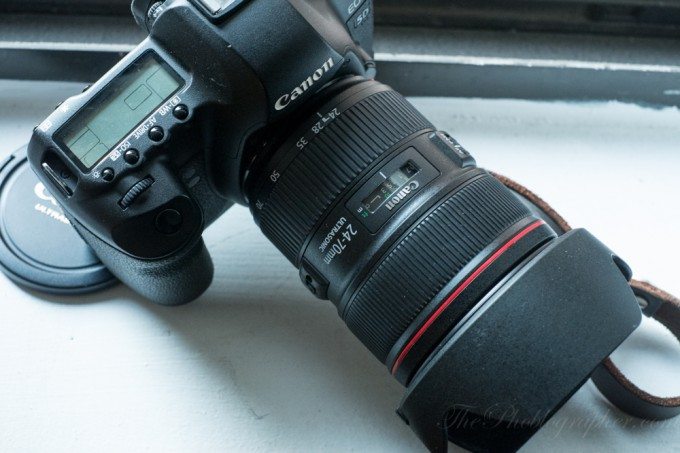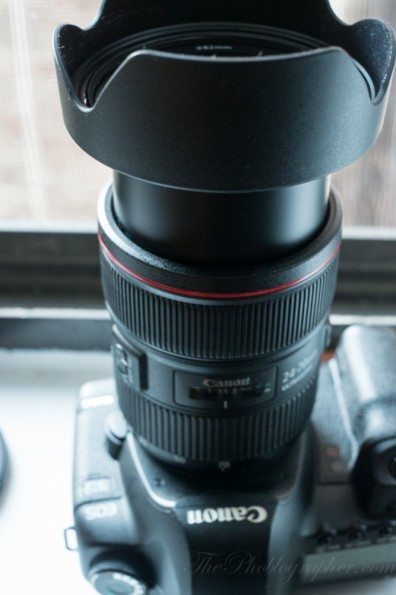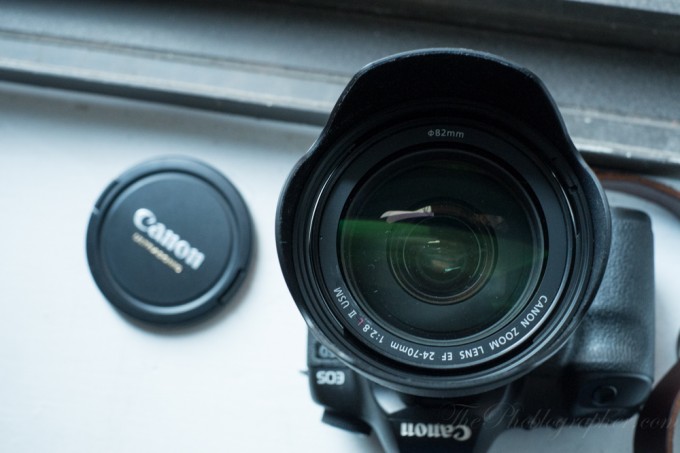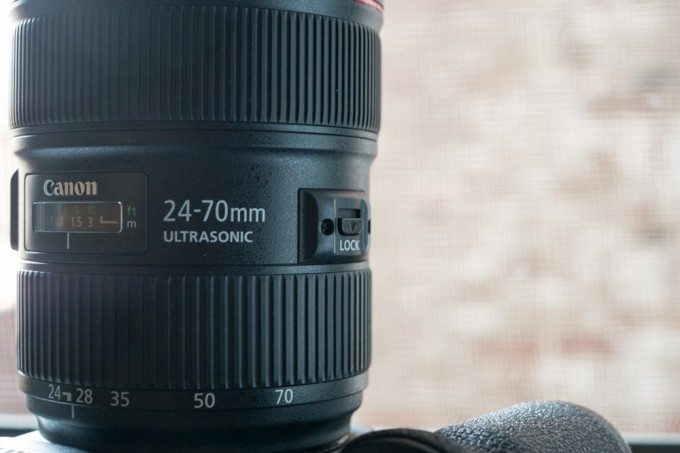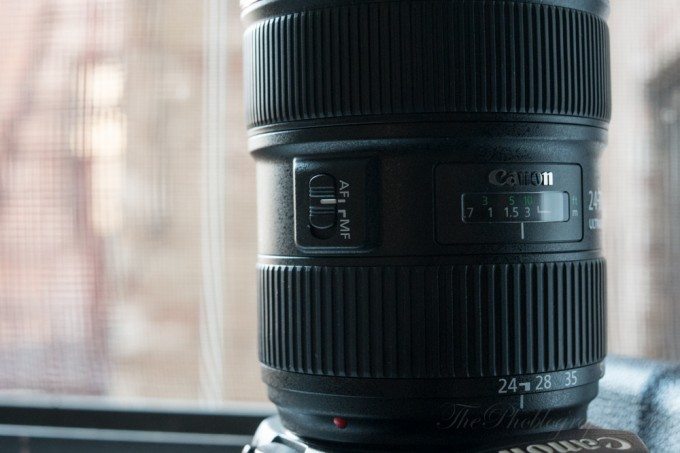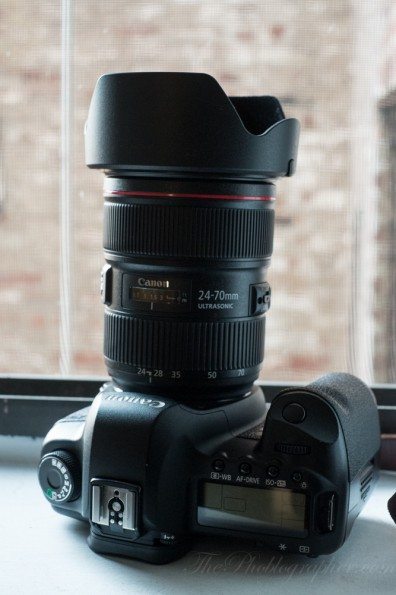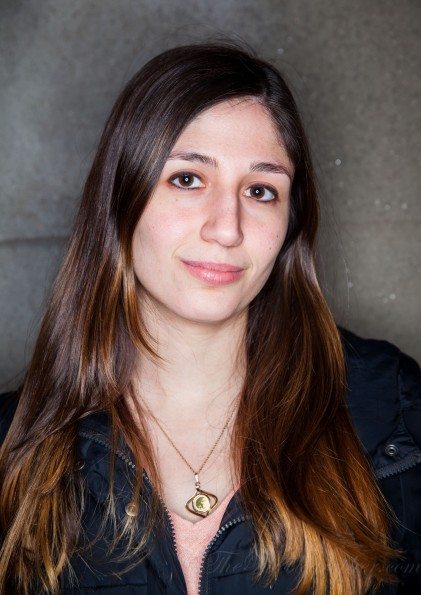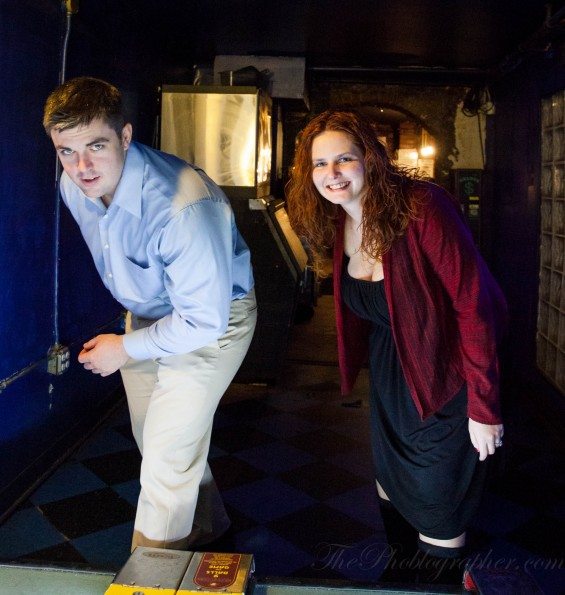We’ve been testing the Canon 24-70mm f2.8 L USM II for quite sometime now. The lens is a confusing one in that Canon decided to not incorporate their legendary IS into the lens to make it an even more attractive offering for photographers looking to upgrade their kit. It has a few ergonomic changes and upgrades and in some ways even surprised the site’s Multimedia Producer Thursten Kent and I.
Like all zoom lenses though, the performance of each lens differs from copy to copy. The Digital Picture found some inconsistencies, and the lens performed differently on different bodies. After some micro-adjust I was able to get it perform well on my 5D Mk II. But this lens still remains to be one of the greatest mysteries in the Canon lineup to me.
TL;DR Version
What’s Awesome: Extremely versatile lens with excellent performance overall for a photographer that needs it versatility.
What’s Not So Awesome: Prime lenses are still sharper, more reliable, and faster to focus. Copies of the lens vary; we tested three different ones. Lack of image stabilization shows that Canon’s corporate philosophy still hasn’t changed and does not realize that sometimes they need to cannibalize their own work to improve.
Verdict: This lens is quite expensive. Tamron’s 24-70mm f2.8 with VC is a better choice for the money.
Roundup of Other Coverage
Informal Sharpness Test Against My Prime Lenses: take a look for yourself to see if the new 24-70mm f2.8 L USM II can stand up to more affordable prime lenses.
Shooting an Event with the Canon 1D X: This is perhaps the camera that this lens was designed to work with. It delivered some flawless performance.
Shooting Hurricane Sandy with the lens: This lens stood up to torrential rains better than my 5D Mk II did.
Also if you need another resource, check out our article on whether you should use an f2.8 or f4 lens instead.
Gear Used
For this review we primarily shot with the 24-70mm f2.8 L USM II on the Canon 5D Mk II to target users that believe that the older camera is still worth it for them. However, we also tested it with the Canon 1D X and the venerable 580 EX II. For two shoots, we use the Canon 5D Mk II with the lens and a Paul C Buff Einstein E640, an Impact 60 inch convertible umbrella and Pocket Wizard Plus III triggers.
Tech Specs
Specifications borrowed from the B&H Photo Video Pro Audio listing of the product
| Features | |
|---|---|
| Image Stabilization | No |
| Autofocus | Yes |
| Tripod Collar | No |
| Physical | |
|---|---|
| Filter Thread | 82 mm |
| Dimensions (DxL) | Approx. 3.5 x 4.4″ (8.89 x 11.18 cm) |
| Weight | 1.77 lb (803 g) |
Ergonomics
The new Canon 24-70mm f2.8 L USM II looks a ton like previous Canon lenses with a couple of new exceptions. First off, it should be noted that the company chose to go with a brand new finish for the lens. It reminds me a lot of the finish from older Sigma lenses. When we first took it out of the box, my first expression was, “Oh no.” I’ve never been a fan of that finish, but after a while, I grew to just ignore it.
Unlike the previous lens, Canon has fixed the zooming problem. To be more clear, the 24-70mm f2.8 L USM II is collapsed at 24mm and extended at 70mm. In older versions, it was the opposite. This lens also doesn’t seem to have as tough of an exterior as the previous version did; which likened more to a metallic finish.
The lens also has a much larger front end at 82mm on the filter thread. If you really want to protect your investment, get ready to spend a good chunk of change to get a new filter.
New to the design of the Canon lenses in this lineup is the inclusion of a locking switch. In the long run this will help prevent lens creep but it also helps to keep the lens compact when in storage.
On the left side is the AF/MF switch; which hasn’t seemed to change much at all.
Characterizing the lenses are the two control rings: one for focusing and the other one for zooming. Both are big, beefy, and feel very nice in practical shooting situations.
Autofocus
When coupled with a camera like the Canon 1D X, the 24-70mm f2.8 USM L II had little to no trouble focusing on subjects even in the dimmest of lighting settings. It was quite a joy to use and tells me that it can keep up with fast paced event photography work. But when using an older camera like the 5D Mk II, I experienced a couple of problems with the focusing. It required microadjustment and wasn’t so simple to use right from the get go like it was with the 1D X. That leads me to conclude that this lens should really only be used with the Canon 7D and later cameras for the absolute best results and performance.
The lens is also fast and silent to focus no matter what camera you throw it on. During Hurricane Sandy, the lens also focused very quickly and accurately despite problems with my 5D Mk II’s focusing system occurring. If I had used the 1D X or the 5D Mk III, I have no doubt in my mind that the focusing performance would have been better despite the fact that even the Mk III can have focusing issues as well.
To give you a clearer picture of the problems I encountered, even when shooting photos of my roommate in the middle of the day and with a modeling lamp on my subject, the lens still misfocused. Still, this should be blamed on the camera.
Additionally, I also recommend using the exact focusing point instead of focusing and recomposing. If you’re purchasing a lens this expensive and an expensive camera as well, it only makes sense to use the couple to their highest potential. This way you can also get the best sharpness and the plane of focus will not be thrown off when one recomposes. This is a humble piece of advice for the old school shooters (and I know a ton of them) that love to focus and recompose.
Ease of Use
This lens thankfully has nothing complicated about it at all. There are no special focusing switches or anything else out of the ordinary. It is designed for you to do the least amount of work and focus on the image taking process.
A really nice touch that I ended up falling in love with is the locking switch on the lens. It can only be locked at the 24mm position, but the lens then becomes a glorified prime lens with the option of giving you some extra reach if you want.
This lens was tested for photojournalistic, event, portrait, landscape, and engagement/wedding use. Though we normally test lenses for street photography, we strongly feel that this lens should not be used for the streets. Instead, we encourage users to focus on prime lenses instead. Personally, I’d recommend any Zeiss lens due to the fact that there is a depth of field scale for Zone focusing (also known as hyperfocal length shooting.)
Image Quality
Before I continue, I’m going to also encourage you to look at our posts where I used the lens to photograph Hurricane Sandy in Brooklyn, shoot Top Chef winners hard at work with the 1D X, and an informal sharpness test. This will give you some extra insight and image samples into how the image quality of this lens is.
In general, this is a sharp lens but between the two copies I tested (one was from B&H Photo and the other belonged to a friend who bought it) it seemed that there was inconsistent focusing performance with an older camera like the 5D Mk II and even some with the 5D Mk III. Plus his version seemed to be a tad sharper than mine even when using lighting to add some specular highlights to improve perceived sharpness.
Once again, this is a known issue with the lens and though microadjustment can fix any problems, not many people know how to do it. I did a video tutorial on calibrating your lens’s focusing for B&H Photo Video Pro Audio a while ago for anyone interested in this. For a zoom lens like this though, I strongly recommend sending it back to the manufacturer and having Canon calibrate the focusing themselves. If you have a prime lens, it’s a different story. But zoom lenses ultimately need to be adjusted for every single focal length in order to do this properly. In the end, this will all affect the final image quality.
Otherwise, the color accuracy with the lens is top notch, there is very little vignetting wide open and the distortion is kept down though it is still visible. Here are some image samples from the lens but please be sure to check out our other posts listed above. Note that some of these exhibit the focusing issues that I speak of with the 5D Mk II as well; but if you’re not pixel peeping, your client honestly might not care. The key word there is client. You should really only get this lens if you have clients to speak of.
All of these photos were edited in Adobe Lightroom 4.3 on my brand new Apple Macbook Pro 13 inch Retina Display laptop.
Conclusions
I’m going come straight out and say this one: get Tamron’s 24-70mm f2.8 VC instead. I loved that lens a lot more than this one and even found it to be sharper when viewing my photos despite no formal comparison test being done between the two.
Canon’s 24-70mm f2.8 L USM II is quite expensive, but it gets so much right. The company fixed the reverse zooming issues, the color accuracy is top notch, it can be super sharp if you get the right copy, it is weather sealed like a boss, it is super durable and stays pretty darned compact. If I really had to make a choice though, I’d still stick with my three favorite primes: the 50mm f1.4, 35mm f1.4, and 85mm f1.8. These three lenses have never failed me and together they are all more affordable than Canon’s new standard zoom lens. Those lenses also all work flawlessly with new cameras. If you want to spring for this lens, I also recommend that you get a newer camera to ensure that you don’t have as many focusing issues and to then therefore utilize its functionalities to its peak performance.
For the price though, the lens should have image stabilization built in or perhaps even be made into an internal zooming lens. If this was done, I could easier justify the price tag. But this lens baffles me. It is the bread and butter optic of many professionals out there but Canon’s quality control of it seems to be a bit sub par. It’s a mystery that has me scratching my head.
To boot, third party manufacturers are also starting to catch up to Canon’s game and even surpass the company in many ways. For the past year, former Reviews Editor Mike Pouliot and I have been trading emails back and forth about the decision to sell off all of our Canon glass. Indeed, we’re both in love with what Sigma has done in their primes within the past couple of years but Zeiss also makes some of the best glass out there. Mike sold off his Canon gear and has gone all mirrorless; but I still have an emotional attachment to my 5D Mk II (it quite literally helped me build this site and has stuck by me/gotten me through some extremely dark financial times in my life.) But for a more affordable price, one can get stellar image quality from third party manufacturers.
In the end, I didn’t end up buying this lens. It concerns me as the Canon L branding just doesn’t seem to be what it used to be.
Please Support The Phoblographer
We love to bring you guys the latest and greatest news and gear related stuff. However, we can’t keep doing that unless we have your continued support. If you would like to purchase any of the items mentioned, please do so by clicking our links first and then purchasing the items as we then get a small portion of the sale to help run the website.


